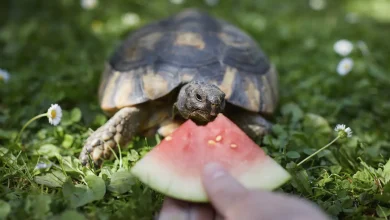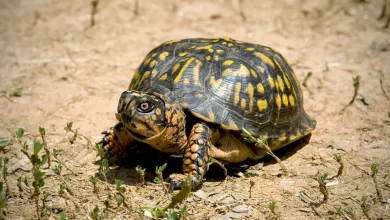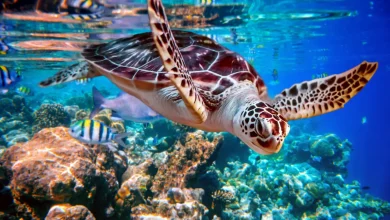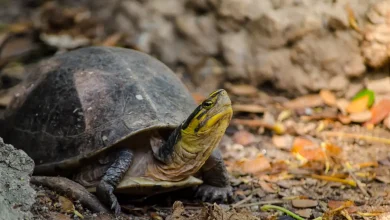McCord’s Box Turtle (Cuora mccordi)
McCord’s box turtle is an Asian box turtle in the genus Cuora. The species was first described in 1988 based on specimens found in the pet trade.
- Cuora mccordi – Ernst, 1988
The first specimens observed by scientists in the wild were not found until almost 20 years later.
(Zhou et al. (2007) )
This species is known under three different synonyms:
- Cuora mccordi – Ernst, 1988
- Cuora accordi – Nöllert, 1992
- Cistoclemmys mccordi – Vetter, 2006
Table of Contents
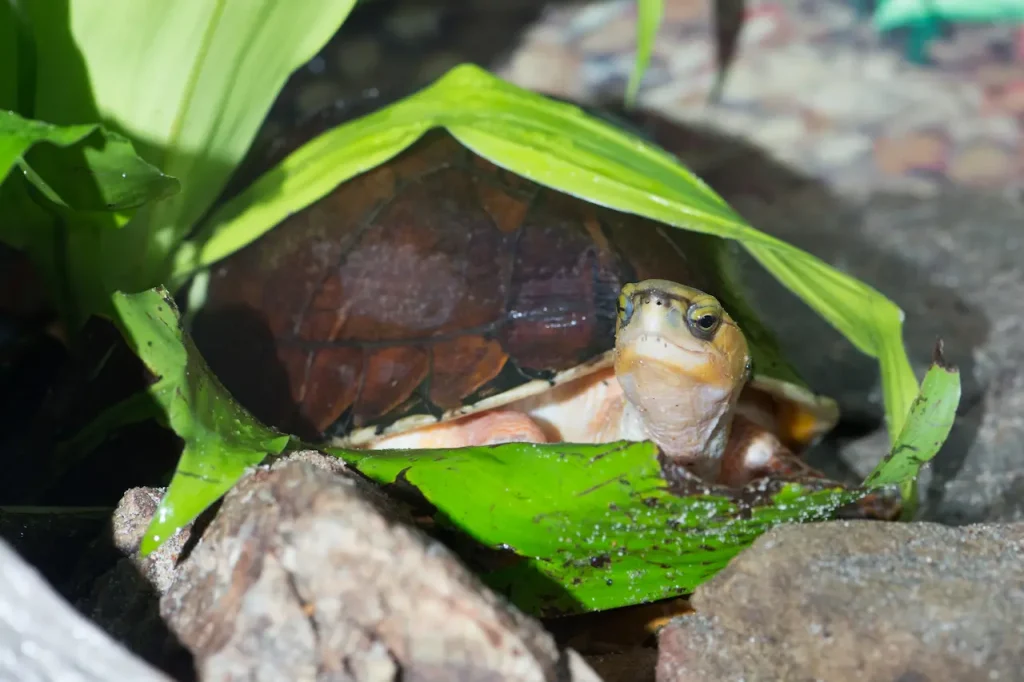
Cuora mccordi Distribution
The species was described using information provided by a Hong Kong animal dealer. The dealer stated that the animals were collected near the town of Boise in the province of Guangxi. He later changed his statement claiming them to be collected in the nearby province of Yunnan. The true distribution of this species remained unknown for a very long time until an expedition by Zhou found the species in the wild in the Guangxi province (Zhou et al. (2007) ). It is possible that both of the locations the Hong Kong animal dealer provided are correct and that there are populations to be discovered in the Yunnan province as well.
The species is currently considered endemic to a small area in Guangxi province and is listed as critically endangered in the IUCN Red List see Appendix II. The species is highly sought after in traditional Chinese medicine as well as in the pet trade. The turtles can fetch several thousand dollars each making them worth the effort to harvest even considering the difficulty in doing so removing the demand from the pet industry can therefor have a significant conservation effect,
A limited number (around 350) of McCord’s box turtle is kept in captivity. Most of them are in zoos and private hands. The species is now being bred in captivity which gives hope that the pressure on the wild population from collection for the pet industry can decrease.
It is unknown how many turtles remain in the wild and the species is becoming a more and more rare sight in Chinese food markets signaling that the numbers are dropping. Some reports are saying that the species isn’t seen at all any more and the species might be extinct or near extinct in the wild. The fact that the species succeeded in staying hidden from science for almost 20 years does however give hope that this species as well as other highly endangered Asian box turtles such as the Cuora zhoui remains in the wild.
McCord’s box turtle Habitat
Very little is known about the habitat this species is found in and most of the information that exists is derived from observing these turtles in captivity. The species seems to be largely aquatic but will spend time and feed on land. They often mate on land. Cuora mccordi is nocturnal and digs itself into the ground during the day.
The waterways in the Guangxi province have been heavily polluted and otherwise affected by human development in the area which is bound to affect the turtle populations.
Body
The McCord’s box turtle has a reddish-brown elliptical, domed carapace. The carapace has dark edging. It has a yellow flexible plastron that can completely close its shells. The head is narrow and pointed. The colour of the shell and the bright yellow head with black edges and yellow stripes combined with the yellow limbs and tail make this one of the most visually stunning Cuora species.
They can grow to about 18 cm (7.2 inches). This species was earlier believed to only reach 14 cm / 5.5 inch and time may prove that they can grow even larger than the 18 cm (7.2 inches) that is currently believed to be their max size.
What does the McCord’s box turtle eat?
There is no information on this species’ feeding habits in the wild. This information is based on observations made from Cuora mccordi kept in captivity. Cuora mccordi is a largely carnivorous species. More so than many other Asian box turtles. They will however also eat a limited amount of vegetable matter. They eat live fish, earth worms, snails, crayfish and shrimp etc. They do most of their foraging in the water but will not turn down food on land either.
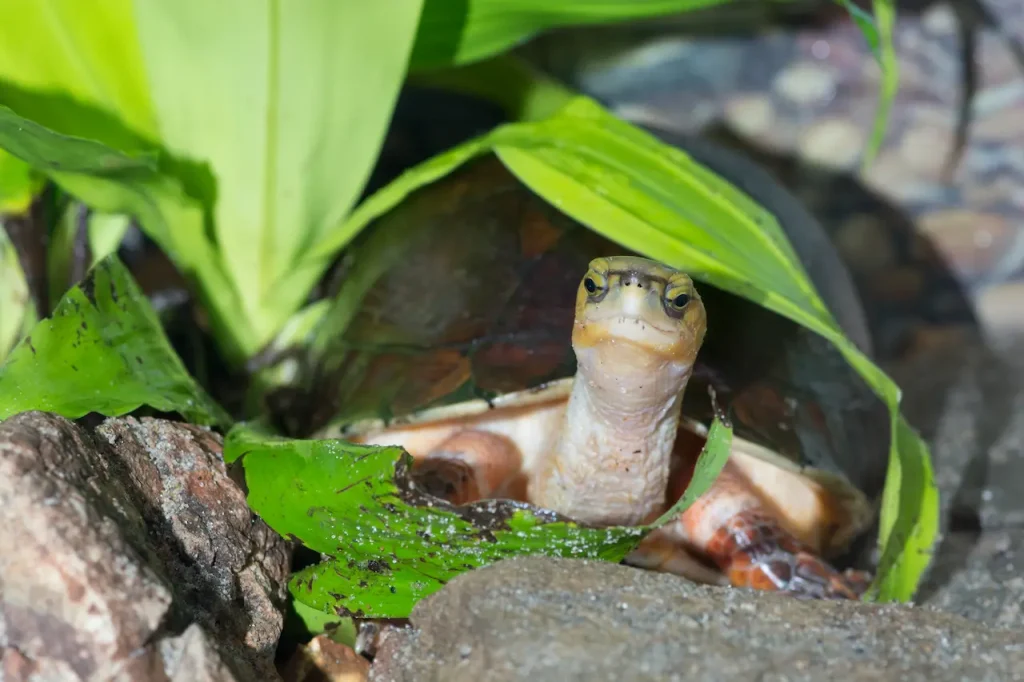
How old can a McCord’s box turtle get?
There is no conclusive information on the maximum age of McCord’s box turtle.
Keeping Cuora mccordi as pets
McCord’s box turtle can due to the low number of turtles available only be recommended to experienced turtle keepers that can keep and breed this species. If this doesn’t describe you it is best that you refrain from getting a McCord’s box turtle until the captive breeding efforts have been able to increase the number of turtles available.
The information provided in this article is only to be considered an introduction to keeping McCord’s box turtle in captivity. I strongly recommend that anyone who is considering getting this species get additional information from someone currently keeping and breeding the species before acquiring McCord’s box turtle.
Housing a McCord’s box turtle
McCord’s box turtle should be kept in a pen that features both an aquatic and a terrestrial section. Pens are ideally placed in a green house or near big windows where natural light can hit the pen. The greenhouse or window must be made from a material that allows UV light to penetrate. A UV penetration rate of 80% is usually recommended. If this is not possible to provide you will need to provide them with artificial UV lighting.
The aquatic section should contain logs or rocks under which the turtles can hide.
The pen should be large enough to provide the animals with plenty of space to move around on both land and in water. They are known to do well and breed in pens that are 6x2x2 ft (180x60x60cm). The terrestrial area should contain plants that cover some of the ground and that create shaded areas. There should also be areas with a fine-grained substrate where the turtles can dig. The substrate should be at least 8 inches / 20 cm deep. The pen should be fitted with the requirement required to lower and raise the temperature as needed.
You will need a place to overwinter the turtle. They are best overwintered at a temperature of
4-10°C and in a humid environment. The turtles are best overwintered in a medium consisting of garden soil and coconut fibre.
Try to prevent the temperature from exceeding 32°C / 90°F in the summer and from falling below 8°C/ 46°F during the winter. It is recommended to use automatic ventilation to prevent overheating.
Feeding a McCord’s box turtle
McCord’s box turtle should be fed a meaty protein diet with the occasional vegetables. They will as an example happily accept a supplement of bananas that will give them well need minerals and protein. Other nutrient-rich fruits and vegetables can also be used.
Breeders have seen success by feeding their adult McCord’s box turtle two or three times a week. Removing any food that has not been consumed in about 15 minutes. Young turtles should be fed more often.
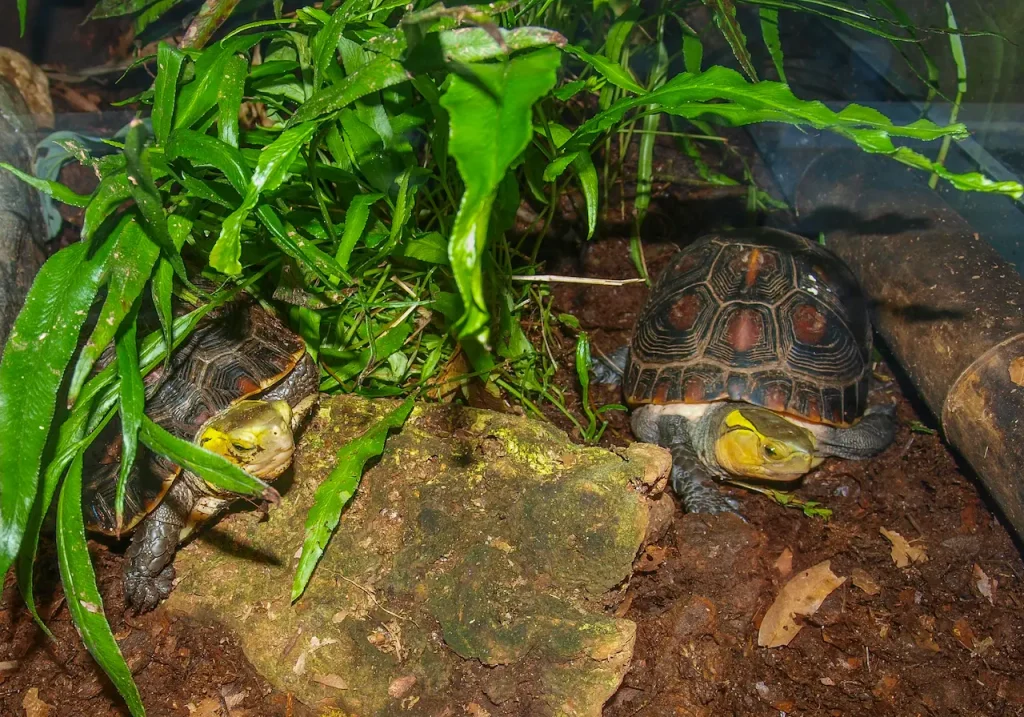
References
- Zhou T., T. Blanck, W. P. McCord + P-P. Li. 2007. Tracking Cuora mccordi (Ernst, 1988); the first record of its natural habitat; a re-description; with data on captive populations and its vulnerability.
- UCN Red List https://www.iucnredlist.org/
- Ernst,C.H. 1988. Cuora mccordi, a new chines box turtle from Guangxi Province. Proc. Biol. Soc. Washington 101: 466-470
- Parham, James Ford ; W. Brian Simison; Kenneth H. Kozak; Chris R. Feldman and Haitao Shi. 2001. New Chinese turtles: endangered or invalid? A reassessment of two species using mitochondrial DNA, allozyme electrophoresis and known-locality specimens. Animal Conservation 4: 357–367
- Spinks, Phillip Q.; Shaffer, H. Bradley. 2007. Conservation phylogenetics of the Asian box turtles (Geoemydidae, Cuora): mitochondrial introgression, numts, and inferences from multiple nuclear loci. Conservation Genetics 8(3):641-657.
